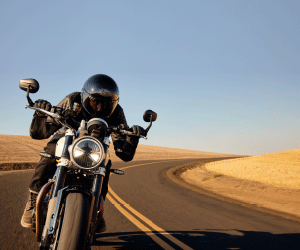Ducati returns to producing a single-cylinder road engine, 30 years after the legendary Supermono 550. It is called Superquadro Mono, has a capacity of 659 cc, is equipped with a Desmodromic system, and establishes itself as one of the new benchmarks in the category in terms of performance.
This single-cylinder, designed with the choice of refined materials and solutions for each component, is based on the engine of the Panigale 1299, the 1285 cc Superquadro, which represents the ultimate evolution of Ducati’s road-legal twin-cylinder engines. The Superquadro Mono inherits the 116 mm diameter piston from the Panigale engine, the combustion chamber shape, the 46.8 mm titanium intake valves, the 38.2 mm steel exhaust valves, and the Desmodromic system.

Thanks to these solutions, the Superquadro Mono delivers a maximum power of 77.5 hp at 9,750 rpm, and is capable of reaching 10,250 rpm*, values never before achieved by a single-cylinder road engine. The torque, whose maximum value is 6.4 kgm at 8,000 rpm, is distributed particularly favorably, resulting in a linear and exploitable power delivery. All this while respecting the limits of Euro 5 homologation. In the competition configuration with the Termignoni exhaust, this single-cylinder engine can reach the incredible maximum power value of 84.5 hp at 9,500 rpm.
The Superquadro Mono will also be used in motorcycles for A2 license holders, in a limited version.
Technical solutions and refined materials for performance and lightness

The 116 mm diameter piston is an absolute record for a production single-cylinder. Originating from competition, it has a “box in box” design like the pistons of the Panigale V4 R, with a double trellis base to combine rigidity and strength, reducing contact surfaces with the ultimate goal of containing friction. For the same reason, the piston pin is equipped with a Diamond Like Carbon (DLC) surface coating, the same treatment used on the pistons of the Panigale V4 R. The compression ratio is 13.1:1.
Just like in the Desmosedici MotoGP engine, the rockers of the Desmodromic system also feature DLC (Diamond Like Carbon) surface coating to reduce friction and increase fatigue resistance. The distribution is controlled by a mixed “silent” gear/chain system.
The fuel delivery is entrusted to a single oval-section injection body with an equivalent diameter of 62 mm, with an injector controlled by a ride-by-wire system that offers three different Power Modes (High, Medium, Low) to adapt the engine delivery to different driving situations.


The engine’s cast crankcases integrate wet liners around the cylinder, made, as in the 1299 Superleggera, of aluminum instead of steel, which benefits in terms of weight and cooling due to the reduced thickness of the walls. This solution also allows the cylinder head to be fixed directly to the crankcase, resulting in a much more compact engine with the same structural rigidity. The clutch, alternator, and cylinder head covers are made using cast magnesium alloy, again to minimize the engine weight while ensuring high mechanical strength.
The crankshaft is asymmetrical and mounted on differentiated main bearings to contain weight. The engine’s balance is ensured by the presence of two balance shafts (one in front and one in the rear) mounted on bearings inside the crankcase and controlled by gears. The shafts also control the water and oil pumps.
The design of the two balance shafts, placed next to the crankshaft, allows the first-order inertia forces to be completely balanced without presenting unwanted moments or forces. Thanks to this solution, the engine is able to operate at extremely high speeds while maintaining a level of vibrations comparable to that of a 90° V-twin. The Superquadro Mono features two oil pumps, one for delivery that ensures efficient engine lubrication, and one for recovery, located in the connecting rod compartment, which removes oil from the side compartments of the alternator and clutch covers, in order to reduce friction losses of the lubricant with the moving parts. This pump, along with the valve placed in the combustion circuit, creates a depression in the crankshaft compartment, similar to competition engines, in order to reduce the resistance of moving parts and ensure effective recovery of lubricating oil under any engine operating conditions. The transmission is handled by a six-speed gearbox with racing ratios, derived from the experience gained with the Panigale V4. The first gear is actually long to allow its use in slow corners, maximizing acceleration. The clutch is oil-bathed with progressive hydraulic control, characterized by a particularly reduced lever load and specifically developed to offer easy and intuitive behavior, modulable to the maximum when releasing and managing engine braking, to facilitate power sliding at the entry of corners.The box can be equipped with Ducati Quick Shift (DQS) Up & Down. In this application, the DQS is supported by a magnetic sensor rather than the traditional load cell to improve accuracy and reliability.
* Only in first gear, the limiter is set to 10,000 rpm
The Superquadro Mono will equip the bike that will be the star of the fifth episode of Ducati World Première 2024 “Live. Play. Ride”, on Thursday, November 2nd at 3:00 pm GMT on Ducati.com and on the channel of Ducati on YouTube.











